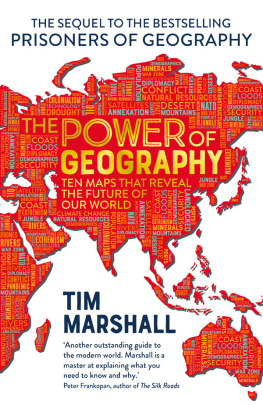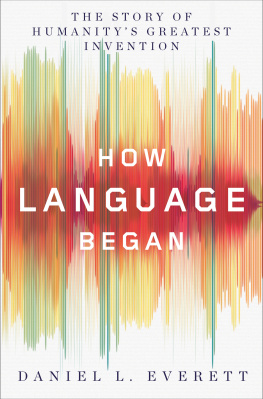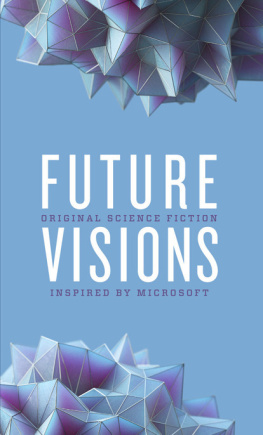Marshall Brain - Manna: Two Visions of Humanitys Future
Here you can read online Marshall Brain - Manna: Two Visions of Humanitys Future full text of the book (entire story) in english for free. Download pdf and epub, get meaning, cover and reviews about this ebook. year: 2012, publisher: BYG Publishing, genre: Art. Description of the work, (preface) as well as reviews are available. Best literature library LitArk.com created for fans of good reading and offers a wide selection of genres:
Romance novel
Science fiction
Adventure
Detective
Science
History
Home and family
Prose
Art
Politics
Computer
Non-fiction
Religion
Business
Children
Humor
Choose a favorite category and find really read worthwhile books. Enjoy immersion in the world of imagination, feel the emotions of the characters or learn something new for yourself, make an fascinating discovery.
- Book:Manna: Two Visions of Humanitys Future
- Author:
- Publisher:BYG Publishing
- Genre:
- Year:2012
- Rating:5 / 5
- Favourites:Add to favourites
- Your mark:
- 100
- 1
- 2
- 3
- 4
- 5
Manna: Two Visions of Humanitys Future: summary, description and annotation
We offer to read an annotation, description, summary or preface (depends on what the author of the book "Manna: Two Visions of Humanitys Future" wrote himself). If you haven't found the necessary information about the book — write in the comments, we will try to find it.
Manna: Two Visions of Humanitys Future — read online for free the complete book (whole text) full work
Below is the text of the book, divided by pages. System saving the place of the last page read, allows you to conveniently read the book "Manna: Two Visions of Humanitys Future" online for free, without having to search again every time where you left off. Put a bookmark, and you can go to the page where you finished reading at any time.
Font size:
Interval:
Bookmark:
Manna:Two Views of Humanity's Future
byMarshall Brain
Manna: Two Views of Humanity's Future
Copyright Marshall Brain,2012
All rightsreserved
ISBN:978-0-9852321-1-5
KindleFirst Edition
Publisher:BYG Publishing, Inc.
No part ofthis book may be reproduced or transmitted in any form or by anymeans, electronic or mechanical, including photocopying, recording,or any information storage and retrieval system, without priorwritten permission of the Author. Your support of authorsrights is appreciated.
Table of Contents
Dependingon how you want to think about it, it was funny or inevitable orsymbolic that the robotic takeover did not start at MIT, NASA,Microsoft or Ford. It started at a Burger-G restaurant in Cary, NC onMay 17. It seemed like such a simple thing at the time, but May 17marked a pivotal moment in human history.
Burger-Gwas a fast food chain that had come out of nowhere starting with itsfirst restaurant in Cary. The Burger-G chain had an attitude and astyle that said "hip" and "fun" to a wide swathof the American middle class. The chain was able to grow withsurprising speed based on its popularity and the public persona ofthe young founder, Joe Garcia. Over time, Burger-G grew to 1,000outlets in the U.S. and showed no signs of slowing down. If the trendcontinued, Burger-G would soon be one of the "Top 5" fastfood restaurants in the U.S.
The"robot" installed at this first Burger-G restaurant lookednothing like the robots of popular culture. It was not hominid likeC-3PO or futuristic like R2-D2 or industrial like an assembly linerobot. Instead it was simply a PC sitting in the back corner of therestaurant running a piece of software. The software was called"Manna", version 1.0.
Manna'sjob was to manage the store, and it did this in a most interestingway. Think about a normal fast food restaurant. A group of employeesworked at the store, typically 50 people in a normal restaurant, andthey rotated in and out on a weekly schedule. The people dideverything from making the burgers to taking the orders to cleaningthe tables and taking out the trash. All of these employees reportedto the store manager and a couple of assistant managers. The managershired the employees, scheduled them and told them what to do eachday. This was a completely normal arrangement. In the earlytwenty-first century, there were millions of businesses that operatedin this way.
Butthe fast food industry had a problem, and Burger-G was no different.The problem was the quality of the fast food experience. Somerestaurants were run perfectly. They had courteous and thoughtfulcrew members, clean restrooms, great customer service and highaccuracy on the orders. Other restaurants were chaotic anduncomfortable to customers. Since one bad experience could turn acustomer off to an entire chain of restaurants, these poorly-managedstores were the Achilles heel of any chain.
Tosolve the problem, Burger-G contracted with a software consultant andcommissioned a piece of software. The goal of the software was toreplace the managers and tell the employees what to do in a morecontrollable way. Manna version 1.0 was born.
Mannawas connected to the cash registers, so it knew how many people wereflowing through the restaurant. The software could therefore predictwith uncanny accuracy when the trash cans would fill up, the toiletswould get dirty and the tables needed wiping down. The software wasattached to the time clock, so it knew who was working in therestaurant. Manna also had "help buttons" throughout therestaurant. Small signs on the buttons told customers to push them ifthey needed help or saw a problem. There was a button in the restroomthat a customer could press if the restroom had a problem. There wasa button on each trashcan. There was a button near each cashregister, one in the kiddie area and so on. These buttons letcustomers give Manna a heads up when something went wrong.
Atany given moment Manna had a list of things that it needed to do.There were orders coming in from the cash registers, so Mannadirected employees to prepare those meals. There were also toilets tobe scrubbed on a regular basis, floors to mop, tables to wipe,sidewalks to sweep, things to defrost, inventory to rotate, windowsto wash and so on. Manna kept track of the hundreds of tasks thatneeded to get done, and assigned each task to an employee one at atime.
Mannatold employees what to do simply by talking to them. Employees eachput on a headset when they punched in. Manna had a voice synthesizer,and with its synthesized voice Manna told everyone exactly what to dothrough their headsets. Constantly. Manna micro-managed minimum wageemployees to create perfect performance.
Thesoftware would speak to the employees individually and tell each oneexactly what to do. For example, "Bob, we need to load morepatties. Please walk toward the freezer."
Or,"Jane, when you are through with this customer, please closeyour register. Then we will clean the women's restroom."
Andso on. The employees were told exactly what to do, and they did itquite happily. It was a major relief actually, because the softwaretold them precisely what to do step by step.
Forexample, when Jane entered the restroom, Manna used a simple positiontracking system built into her headset to know that she had arrived.Manna then told her the first step.
Manna:"Place the 'wet floor' warning cone outside the door please."
WhenJane completed the task, she would speak the word "OK" intoher headset and Manna moved to the next step in the restroom cleaningprocedure.
Manna:"Please block the door open with the door stop."
Jane:"OK."
Manna:"Please retrieve the bucket and mop from the supply closet."
Jane:"OK."
Andso on.
Oncethe restroom was clean, Manna would direct Jane to put everythingaway. Manna would make sure that she carefully washed her hands. ThenManna would immediately start Jane working on a new task. Meanwhile,Manna might send Lisa to the restroom to inspect it and make surethat Jane had done a thorough job. Manna would ask Lisa to check thetoilets, the floor, the sink and the mirrors. If Jane missedanything, Lisa would report it.
Igrew up in Cary, NC. That was a long time ago, but when I was a kid Ilived right in the middle of Cary with my parents. My father was apilot for a big airline. My mother was a stay-at-home mom and I had ayounger sister. We lived in a typical four bedroom suburban home in anice neighborhood with a swimming pool in the backyard. I was a 15year-old teenager working at the Burger-G on May 17 when the firstManna system came online.
Ican remember putting on the headset for the first time and thecomputer talking to me and telling me what to do. It was creepy atfirst, but that feeling really only lasted a day or so. Then you wereused to it, and the job really did get easier. Manna never pushed youaround, never yelled at you. The girls liked it because Manna didn'thit on them either. Manna simply asked you to do something, you didit, you said, "OK", and Manna asked you to do the nextstep. Each step was easy. You could go through the whole day onautopilot, and Manna made sure that you were constantly doingsomething. At the end of the shift Manna always said the same thing."You are done for today. Thank you for your help." Then youtook off your headset and put it back on the rack to recharge. Thefirst few minutes off the headset were always disorienting -- therehad been this voice in your head telling you exactly what to do inminute detail for six or eight hours. You had to turn your brain backon to get out of the restaurant.
Tome, Manna was OK. The job at Burger-G was mindless, and Manna made iteasy by telling you exactly what to do. You could even get Manna toplay music through your headphones, in the background. Manna had aset of "stations" that you could choose from. That was abonus. And Manna kept you busy the entire day. Every single minute,you had something that Manna was telling you to do. If you simplyturned off your brain and went with the flow of Manna, the day wentby very fast.
Next pageFont size:
Interval:
Bookmark:
Similar books «Manna: Two Visions of Humanitys Future»
Look at similar books to Manna: Two Visions of Humanitys Future. We have selected literature similar in name and meaning in the hope of providing readers with more options to find new, interesting, not yet read works.
Discussion, reviews of the book Manna: Two Visions of Humanitys Future and just readers' own opinions. Leave your comments, write what you think about the work, its meaning or the main characters. Specify what exactly you liked and what you didn't like, and why you think so.













